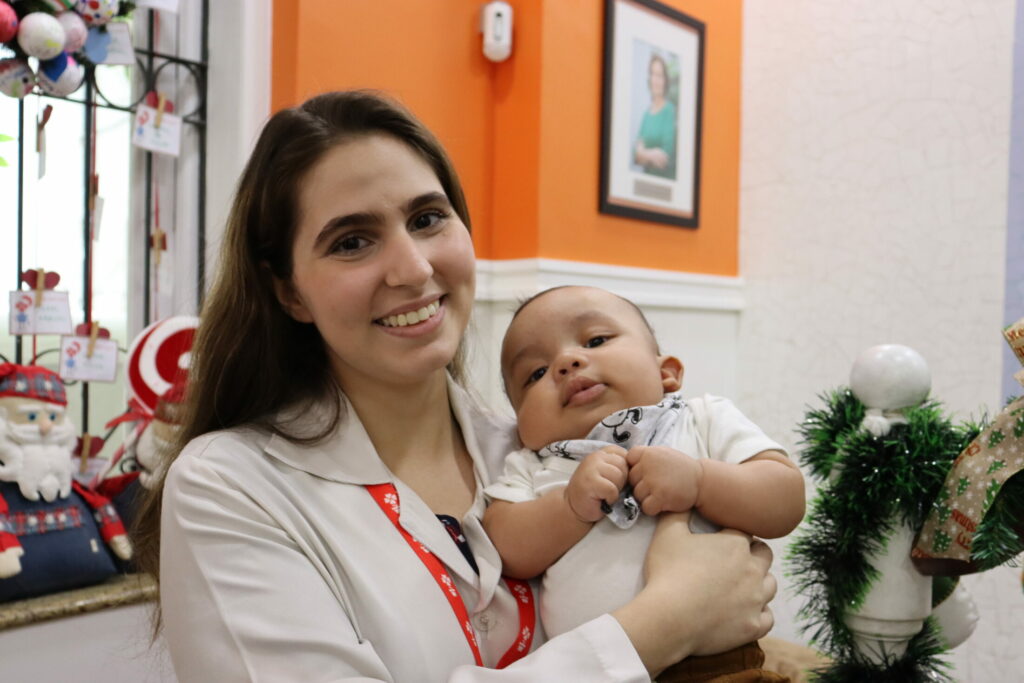Children’s arterial hypertension: rapid and silent escalation
Children’s arterial hypertension: rapid and silent escalation
30/04/2024
With the increase in Arterial Hypertension in the child population, Pro Criança Cardiac warns of the importance of measuring blood pressure in pediatric consultations, in line with the Brazilian Society of Pediatrics.
Studies show that primary Arterial Hypertension (AH) has been increasing in recent years in children over six years of age who are overweight, obese, or have a positive family history of the disease. Pediatric cardiologists at Pro Criança Cardiac have confirmed this increase among patients treated by the institution and warn of the importance of measuring blood pressure (BP) at each pediatric consultation, as hypertension can often go unnoticed. In general, hypertensive children and adolescents are asymptomatic. Only a few present with headaches, irritability and sleep disturbances.
The Institution echoes the Guidance Manual “Arterial hypertension in childhood and adolescence” published in April 2019 by the Department of Nephrology of the Brazilian Society of Pediatrics. In the document (http://bit.ly/2vXQ802), the SBP says that “the interest in studying AH in children and adolescents is old, however, even today, the diagnosis has been made late, due to the lack of inclusion of blood pressure measurement as a routine part of the child’s physical examination”.
Dr. Isabela Rangel, Medical Director of Pro Criança Cardiac, highlights the importance of measuring blood pressure at each medical appointment, especially in the case of children who are obese, or who take medications that can increase BP, who have kidney disease, who are diabetic or with a history of aortic coarctation. “The pediatrician should also take this measurement in the neonatal period, to rule out heart and kidney diseases, among others,” she highlights.
“We have been receiving more and more patients with high blood pressure and the majority without a secondary cause. We attribute the increase in primary AH to the increasing sedentary lifestyle in the pediatric population, inadequate nutrition, associated with a positive family history of hypertension and increased stress”, says Dr. Rosa Celia, founder and president of the institution.
PRIMARY AND SECONDARY ARTERIAL HYPERTENSION:
KNOW THE DIFFERENCE
Primary AH is one that affects the majority of the population – including children and adolescents – and has no identifiable medical cause. Most of the time, it is due to lifestyle, which includes a high intake of salt and calories, factors that lead to excessive weight or obesity, directly related to elevated blood pressure (BP).
Secondary hypertension in children is caused by identifiable diseases, including renal artery thrombosis, renal artery stenosis, congenital renal malformations, aortic coarctation, bronchopulmonary dysplasia, renal parenchymal diseases and primary arterial hypertension.
WHAT ARE THE BLOOD PRESSURE VALUES IN CHILDHOOD?
The analysis of blood pressure in childhood uses as a reference normal values of systolic and diastolic blood pressure in children and adolescents of the same age, sex and height percentile. In childhood, a percentile above 95 is a sign of established hypertension.
Related articles

The 2025 World Top SGOs Are Live

Pro Criança Cardíaca has already secured its registration for the 2025 Best NGOs Award
